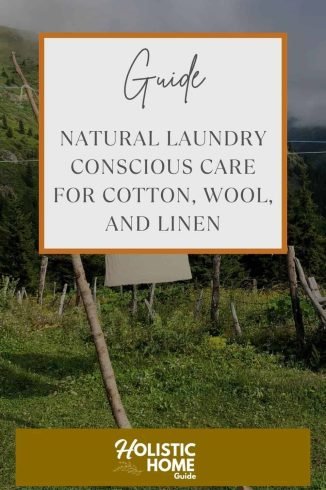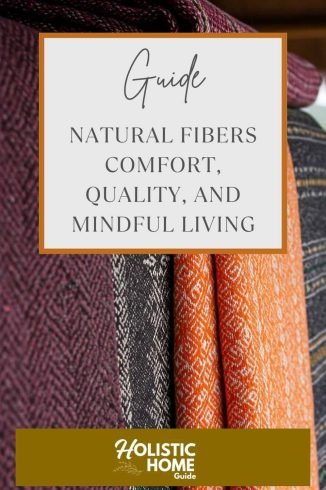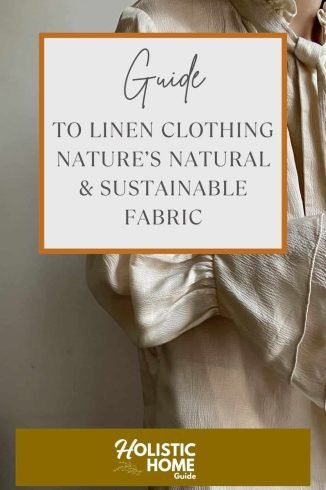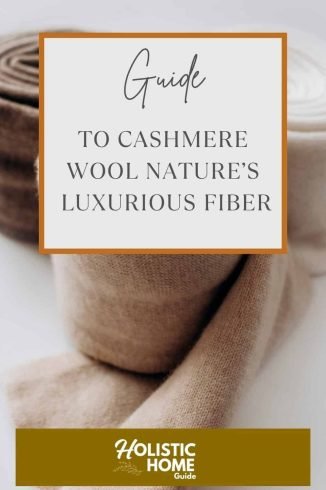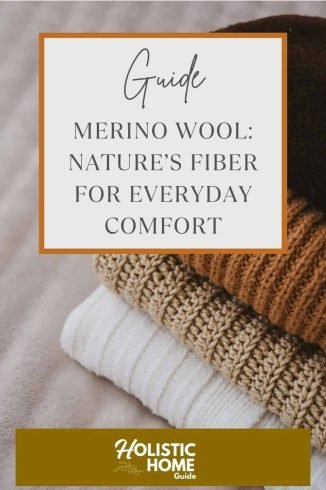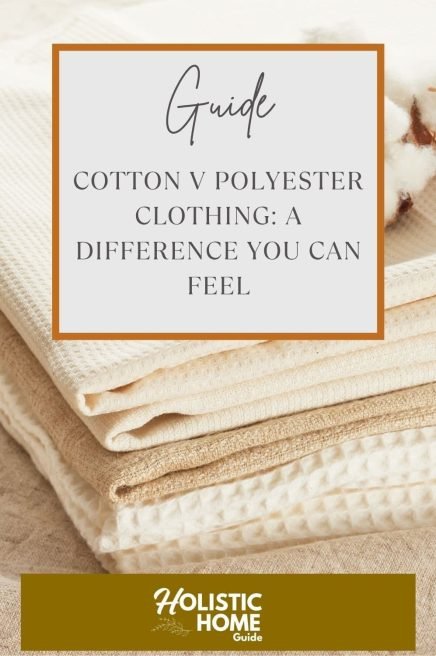Understanding the difference between cotton vs polyester fabric is essential for creating a holistic home. Cotton, a natural fiber that has been grown for thousands of years, provides comfort, temperature regulation, and a gentle touch that synthetics like polyester cannot replicate. Choosing cotton enhances your living environment, from the sheets you sleep on to the clothes you wear every day.
In this guide, you’ll explore what makes cotton unique, how polyester differs, and why natural fibers are superior for both personal comfort and long-term sustainability. From bedding and towels to clothing, understanding these fibers will help you make informed choices that nurture your home and your body.
This post may contain affiliate links which means we may receive a commission for purchases made through links. As an Amazon Associate we earn from qualifying purchases. Learn more on our Privacy Policy.
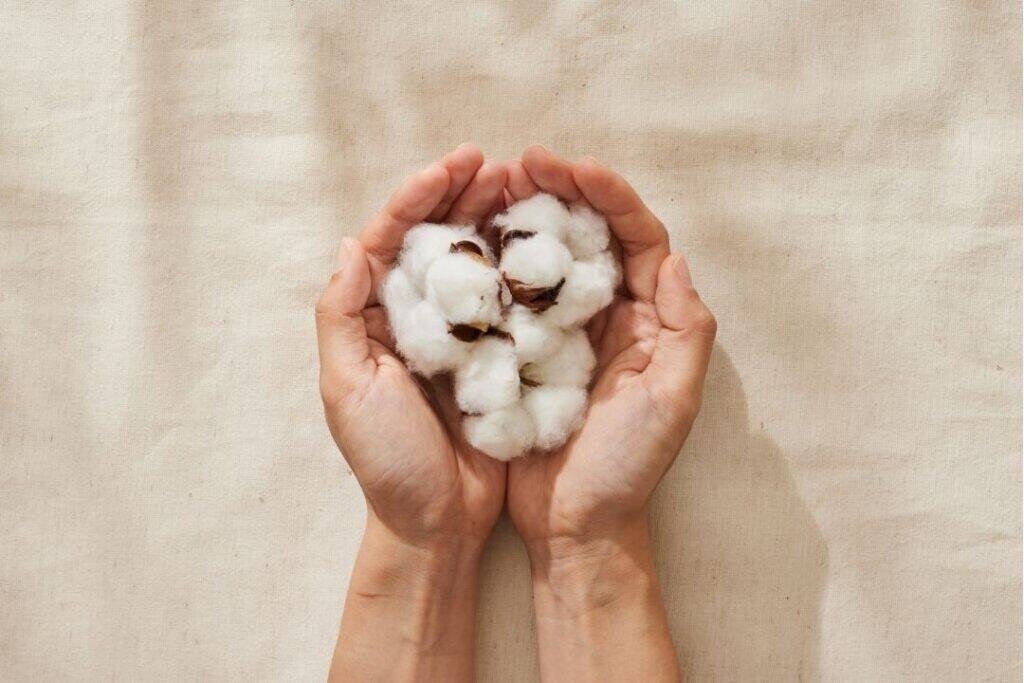
What Is Cotton?
Cotton fabric is derived from the fluffy seed hairs of the cotton plant. These natural fibers are nearly pure cellulose, giving cotton its soft texture, breathability, and natural absorbency. Cotton has been cultivated for thousands of years across Asia, Africa, and the Americas. Over time, people developed specialized varieties, like Egyptian and Pima cotton, prized for their long, strong fibers and luxurious feel.
Cotton’s natural properties make it versatile. It is hypoallergenic and gentle on the skin, allowing it to be used in a wide range of home textiles, including bed linens, towels, upholstery, and even kitchen textiles. Its breathability keeps your body cool in warm climates while providing insulation in cooler conditions.
The Production of Cotton Fabric
The production of cotton starts with harvesting then to cleaning process to remove seeds and debris. The fibers are then carded and spun into yarn. Woven or knitted textiles are dyed, often using low-impact or natural dyes for eco-conscious production. The simplicity of cotton’s chemistry allows it to maintain its softness and breathability without heavy chemical processing, unlike synthetic fibers.
Cotton is also adaptable in weave and finish. Percale and sateen weaves create different textures for bed linens, while terry cloth provides plush absorbency for towels. In clothing, cotton’s flexibility allows for lightweight summer shirts, durable denim, and soft casual wear.

The Sensory Experience of Cotton
There is a reason cotton is often described as “soft as a cloud.” Its fibers are gentle against the skin, absorbent without feeling heavy, and breathable. When used in bedding, cotton helps regulate temperature, wicking away moisture while allowing air circulation. Towels made from cotton feel plush and absorbent, and clothing feels lightweight, breathable, and comfortable for all-day wear.
Unlike polyester, cotton grows softer with repeated washing and use. This natural evolution makes cotton textiles feel lived-in and familiar, enhancing the sensory experience of your home and clothing over time.
What Is Polyester?
Polyester is a synthetic fiber made from petroleum-based polymers through a chemical process. It emerged in the mid-20th century as a durable, wrinkle-resistant alternative to natural fibers. While polyester offers convenience and longevity, it cannot match the softness, breathability, or sensory comfort of cotton.
The Production of Polyester Fabric
The production of polyester begins as purified petroleum derivatives that are polymerized into long chains. These polymers are then spun into fibers and woven or knitted into fabric. Unlike cotton, polyester relies heavily on chemical processing and synthetic dyes. Blended polyester fabrics are common, combining polyester with cotton or other fibers to enhance durability, stretch, or ease of care.
While polyester resists shrinkage, stretching, and wrinkling, its synthetic structure limits its breathability. It can trap heat and moisture, which may cause discomfort in clothing or make towels and bedding feel less fresh. Additionally, washing polyester sheds microfibers that can end up in waterways, contributing to environmental concerns.
The Sensory Experience of Polyester
Polyester feels smooth and sometimes slick against the skin. Unlike cotton, it does not breathe naturally and can create a static or sticky sensation, especially in warm or humid conditions. While practical for activewear or outerwear due to durability and quick-drying properties, polyester cannot replicate the natural comfort, softness, or temperature regulation of cotton.
In home textiles, polyester can provide a crisp appearance, wrinkle resistance, and durability, but it lacks the tactile warmth and moisture-handling ability that make cotton a joy to use daily. Bedding and towels feel less inviting, and polyester blends often sacrifice the natural comfort that cotton provides.
Comfort and Feel
- Cotton: Soft, breathable, absorbent, and cooling. Grows softer with repeated use. Ideal for sheets, towels, and casual wear.
- Polyester: Smooth and durable but traps heat and moisture. Can feel less natural against the skin.
- Blends: Attempt to combine comfort with durability, but often reduce the breathability and softness of cotton.
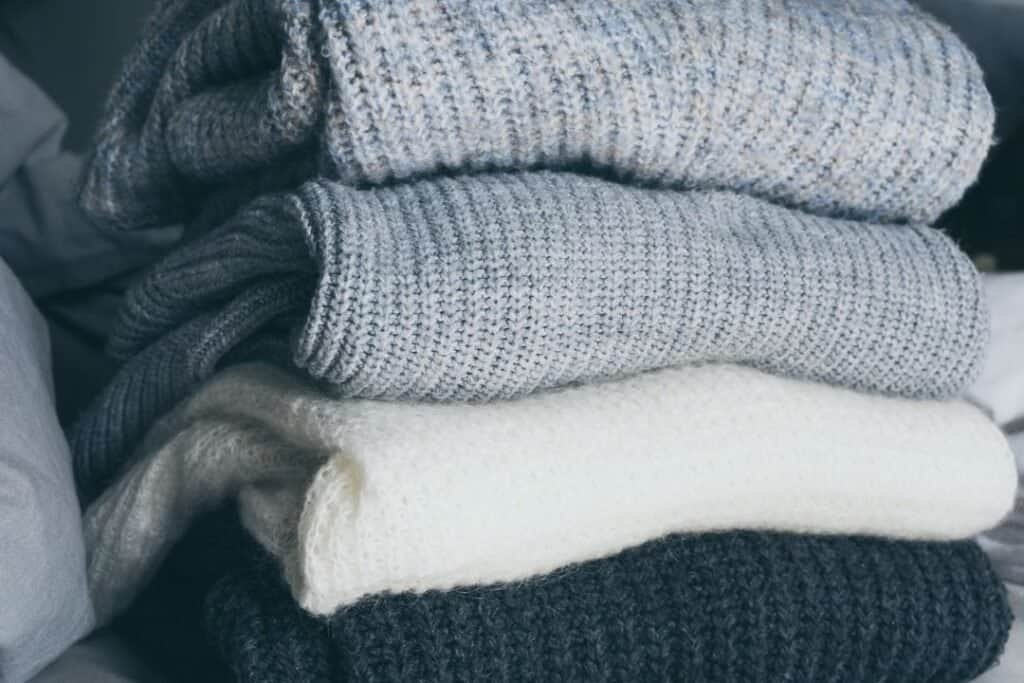
Durability and Performance
Cotton is strong and long-lasting when cared for properly. Machine wash cold or lukewarm, gentle detergent, air dry or tumble dry low. Premium cotton varieties, such as Egyptian or Pima, maintain softness and structural integrity for decades. Towels, sheets, and clothing made from cotton retain their feel and function through years of use.
Polyester fibers resist wear, stretching, and wrinkling, which is why they are used in upholstery and performance fabrics. However, polyester is prone to pilling, can trap odors, and does not evolve in softness with use. Blends provide compromises, offering some resilience while retaining partial comfort.
How to Care for Cotton and Polyester Fabrics
- Cotton: Wash in cold or lukewarm water with gentle detergent. Air dry or tumble dry low. Store in breathable cotton bags to maintain softness and prevent mildew.
- Polyester: Wash cold, tumble dry quickly, avoid high heat to prevent melting or static. Can be hung for shape retention.
- Blends: Follow care instructions carefully to balance softness and durability.
Environmental and Health Considerations
Cotton and other natural fibers are renewable, biodegradable, and gentle on skin. They return to the earth without leaving microplastic pollution. Polyester, made from petroleum, sheds microfibers during washing, contributing to environmental harm. Choosing natural fibers supports a cleaner home, better air quality, and a healthier ecosystem.
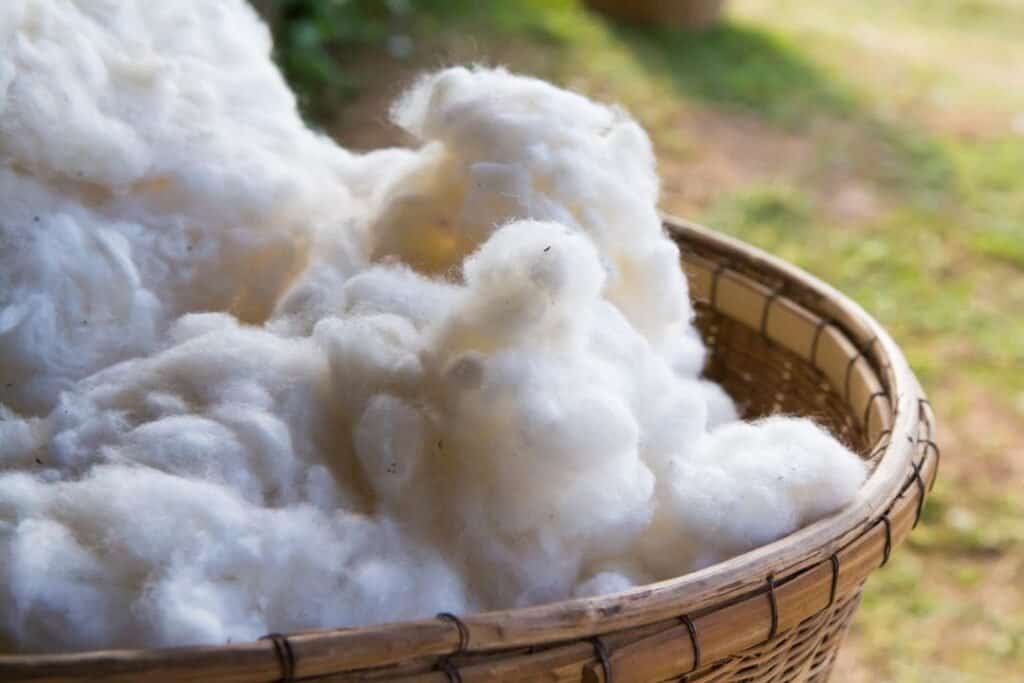
Cotton vs Polyester Fabric vs Natural Fabrics: Comparison Table
| Fiber | Softness | Permeability | Moisture Wicking |
|---|---|---|---|
| Cotton | Soft | Excellent | Absorbs moisture |
| Polyester | Moderate | Poor | Repels moisture, traps sweat |
| Linen | Moderate | Excellent | Wicks moisture |
| Merino Wool | Soft | Excellent | Wicks moisture |
| Cashmere Wool | Extremely soft | Good | Regulates moisture |
| Nylon | Moderate | Poor | Repels moisture |
Frequently Asked Questions
Which is better for bedding, cotton or polyester fabric? Cotton is softer, breathable, and ideal for comfort. Synthetic fabrics may feel crisp but trap heat and moisture.
Does cotton shrink? Yes, especially in hot water. Pre-washed cotton reduces shrinkage risk.
Can polyester irritate sensitive skin? Some people experience discomfort due to heat retention or chemicals used in manufacturing.
Is organic cotton worth it? Absolutely. It avoids synthetic pesticides, supports ethical farming, and improves indoor air quality.
Choosing Natural Fabrics for Your Home
Make your home a sanctuary by choosing cotton, linen, and other natural fibers over synthetic alternatives. Enjoy comfort that lasts, while supporting sustainability and well-being.

